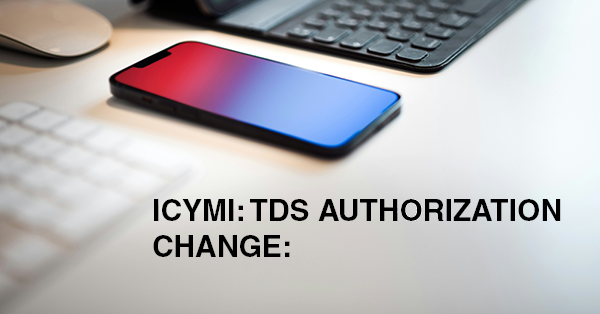IRS RAMPS UP NEW INITIATIVES, CONTINUES TO CLOSE MILLIONAIRE TAX DEBT CASES:

More than $482 million recovered from 1,600 millionaires who have not paid tax debts
The Internal Revenue Service has announced continued progress to expand enforcement efforts related to high-income individuals, large corporations and complex partnerships as part of wider efforts to transform the agency.
IRS Commissioner Danny Werfel noted Inflation Reduction Act resources continue to help in a variety of areas. In addition to earlier announcements focusing on further improving taxpayer service during the upcoming 2024 filing season, the IRS has focused IRA resources on strengthening enforcement to pursue complex partnerships, large corporations and high-income, high-wealth individuals who do not pay overdue tax bills.
The IRS shared progress in its focus on people using partnerships to avoid paying self-employment taxes as well as new details on current enforcement priorities. The IRS is also continuing to pursue millionaires that have not paid hundreds of millions of dollars in tax debt, with an additional $360 million collected on top of the $122 million reported in late October. The IRS has now collected $482 million in ongoing efforts to recoup taxes owed by 1,600 millionaires with work continuing in this area.
“The IRS continues to increase scrutiny on high-income taxpayers as we work to reverse the historic low audit rates and limited focus that the wealthiest individuals and organizations faced in the years that predated the Inflation Reduction Act. We are adding staff and technology to ensure that the taxpayers with the highest income, including partnerships, large corporations and millionaires and billionaires, pay what is legally owed under federal law,” Werfel said. “At the same time, we are focused on improving our taxpayer service for hard-working taxpayers, offering them more in-person and online resources as part of our effort to deliver another successful tax season in 2024. The additional resources the IRS has received is making a difference for taxpayers, and we plan to build on these improvements in the months ahead.”
Werfel highlighted these as part of a quarterly update on the IRS Strategic Operating Plan, the transformational effort using IRA funding. As these initiatives to improve compliance among high-income individuals, complex partnerships and large corporations increase, the IRS continues its work to improve customer service and modernize core technology infrastructure.
Ensuring complex partnerships, large corporations and high-income, high-wealth individual taxpayers pay taxes owed
The IRS is working to ensure large corporate, large partnership and high-income individual filers pay the taxes they owe. Prior to the Inflation Reduction Act, more than a decade of budget cuts prevented the IRS from keeping pace with the increasingly complicated set of tools that the wealthiest taxpayers use to hide their income and evade paying their share. The IRS is now taking swift and aggressive action to close this gap.
Hiring additional top talent to pursue high-income individuals, complex partnerships and large corporations
The IRS offered positions to more than 560 new skilled accountants in November and December, key positions in ramping up work to pursue high-wealth individuals, complex partnerships and large corporations that do not pay taxes owed. Importantly, the IRS has been modernizing its hiring processes and holding more direct hiring events to better compete with the private sector and quickly bring top talent on board.
For example, at a December hiring event in Houston, the IRS hired 160 skilled accountants in two days, compressing the typical three to six month hiring process into one day. These events are marketed in advance, and onsite Human Capital Office staff review all applicants’ credentials and ensure they are qualified for the position. Following this initial screening, applicants are interviewed by hiring managers and passed to selecting officials for a final decision. Successful applicants are given tentative offers, and sponsored and fingerprinted on site, leaving only background and tax checks to be completed.
Improving taxpayer service
The IRS is focused on helping taxpayers get it right the first time — claiming the credits and deductions they are eligible for and avoiding back-and-forth with the agency when errors arise. To help taxpayers get it right, the IRS is working toward taxpayers being able to seamlessly interact with the agency in the ways that work best for them on the phone, in-person and online. The IRS is expanding in-person service and meeting taxpayers where they are, particularly those in underserved and rural communities. The IRS is continuing to expand Taxpayer Assistance Centers across the country.
Opening Taxpayer Assistance Centers: Currently, the IRS has opened or reopened 54 Taxpayer Assistance Centers since the passage of the Inflation Reduction Act, including four since November:
Bellingham, Washington
Eau Claire, Wisconsin
Washington, Pennsylvania
Media, Pennsylvania
Taxpayer Assistance Centers, which provide in-person support to local communities across the country, will collectively offer over 8,000 more hours of in-person assistance than they did last filing season.
Taxpayer Assistance Center hiring update: As of the end of December, the IRS has hired 858 employees to staff Taxpayer Assistance Centers. This represents a 410 net increase in Taxpayer Assistance Center staffing compared to Fiscal Year 2022, and IRS continues to hire to replace departing staff.
Taxpayers deserve the same functionality in their online accounts that they experience with their bank or other financial institutions. As detailed in the Strategic Operating Plan, in the next five years, taxpayers will be able to securely file all documents and respond to all notices online and securely access and download their data and account history. The IRS has hit or has in progress several milestones toward this goal, including the launch of Business Tax Account, the expansion of the Document Upload Tool to accept responses to nearly all notices and letters, and the launch of digital mobile-adaptive forms.
Respond to notices online:Taxpayers are now able to respond to notices online. Until Filing Season 2023, when taxpayers received notices for things like document verification, they had to respond through the mail. During Filing Season 2023, taxpayers were able to respond to 10 of the most common notices for credits like the Earned Income and Health Insurance Tax Credits online, saving them time and money. By July 2023, taxpayers had the option to respond to 61 IRS notices and letters, and by October 2023, taxpayers could respond to all notices and letters that do not have a filing or payment action.As of December, the IRS has received more than 45,000 responses to notices via the online tool.
Processing Status for Tax Forms dashboard: The IRS has launched a public facing Processing Status for Tax Forms dashboard listing current processing status for key forms (e.g., 1040, 941) and general correspondence. The IRS operations: Status of mission-critical functions webpage has also been updated to link to the new dashboard. For electronically filed forms, processing status is the typical number of days it currently takes to process a form after receipt from the taxpayer. For paper forms, processing status reflects which month of receipt is currently being processed. The IRS included forms that had significant volumes of submission in paper format and lead to a follow-on action for the taxpayer after submissions are processed. For example, forms that trigger refunds or the receipt of an Individual Taxpayer Identification Number (ITIN). The page is updated weekly to reflect current processing status.
Voice bots on Where’s My Refund? and Where’s My Amended Return?: IRS launched natural voice language voice bots for taxpayers calling about refunds and amended returns. These voice bots allow callers to ask questions using natural language instead of following menu-driven prompts.
In addition, the IRS continues to expand the functionality of several online platforms:
With the latest updates to Individual Online Account, individuals can now save multiple bank accounts, validate bank account information and display their bank name. Individuals can also schedule and cancel payments and expand and revise payment plans.
The IRS launched the second phase of Business Tax Account that expands its capabilities and eligible entity types. As a result, individual partners of partnerships and individual shareholders of S corporation businesses are now eligible for a business tax account, in addition to sole proprietors with an employer identification number (EIN). Eligible entities can now access business tax transcripts and view digital notices and letters.
Enhancements to Tax Pro Account include the ability to manage active client authorizations with the Centralized Authorization File (CAF) database, view and manage active authorizations, and view their individual and business clients’ tax information including business balance due and canceled and returned checks for individuals.
Modernizing technology
On the technology side, the IRS is modernizing decades-old technology to drive the agency’s efforts to provide world-class customer service and protect taxpayers’ data.
Digitalization: The IRS also continues to make significant progress scanning and e-filing paper returns. By the end of February, the IRS will have replaced scanning equipment that is older than five years and the automated mail-sorter machines in the six highest-volume locations, streamlining the process of mail sorting, opening and scanning. As of the end of December, the IRS had scanned more than 1.5 million forms during the 2023 calendar year — more than 484,000 Forms 940, 907,000 Forms 941 and more than 111,000 Forms 1040. Digitization has far-reaching implications for how the IRS can improve service.




